Small businesses often have razor-thin profit margins. They can’t afford to lose money to inaccurate timekeeping and inefficient processes or they’ll never be able to expand.
That’s probably why you’re considering a time clock to record hours, generate timesheets for payroll, and clock in your team seamlessly.
But to protect your bottom line, you need software that does everything you need and suits your budget. Otherwise, you may as well spare yourself the hassle and stick to punch clocks.
We’ve compared some of the best time clocks for small businesses to put you on the fast track to finding the right one. Plus, we’ve included a checklist for essential features, a step-by-step guide on how to buy the software, and a list of common mistakes to avoid.
Key features to look for in time clock software
Before you compare time clocks, it’s important to have a list of must-have features. That way you know what you should be looking for and you won’t get sidetracked by unnecessary add-ons that drive the cost up.
- Time tracking and attendance: Save time and reduce the risk of errors by automatically recording hours and converting them into time sheets.
- GPS clock-in verification: Ditch punch clocks and let employees clock in and out effortlessly with a mobile app. Confirm their location and arrival time without inconveniencing them or you.
- A mobile app: Give employees free access to a time clock app to clock in and receive alerts about their shifts.
- Payroll integrations: Don’t waste time inputting timesheet data into a separate accounting program. Integrate software to automatically convert your team’s hours into wages quickly and accurately.
- Reminders and alerts: Avoid extra costs by setting notifications when staff are approaching overtime or you have a potential compliance issue.
- Reporting and analytics: Get an overview of your labor costs and staff hours so you know whether you’re sticking to your budget.
Top 10 time clocks for small businesses in 2023
| Name | Pricing (monthly) | Support | Payroll | Notable features |
 |
Plans range from free to $99.95 per location
Homebase payroll costs $39/month base fee + $6/month per active employee |
✓ — phone, chat, and email | ✓ — and choice of 11 integrations | Chat tools
Compliance alerts Robust free plan Notifications and reminders Labor cost controls |
 |
Plans range from free to $4 per user | ✓ — chat and email | ✗ — but integrates with Gusto and ADP | Tracking tools in local time
Labor cost controls |
| Plans range from free to $357 | ✓ — phone and email | ✗ — but integrates with Gusto and Quickbooks | GPS location tracker
Task tracking |
|
| Plans range from $2.50 per user to $8 per user | ✓ — chat and email | ✗ — but choice of 8 integrations | Integrated communication tools
Notifications and reminders |
|
 |
Plans range from $3.50 to $4.90 per user | ✓ — phone, chat, and email | ✗ — but choice of 25 integrations | Task management
Flexible weekly plan |
 |
Pricing not readily available | ✓ — phone, chat, and email | ✓ — but no integrations | Compliance alerts
Labor cost controls Notifications and reminders |
| Plans range from $20 plus $8 per employee to $40 plus $10 per employee | ✓ — phone, chat, and email | ✓ — via integration with Quickbooks Payroll or a choice of | GPS location tracker
Task management Mileage tracking |
|
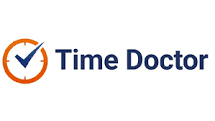 |
Plans range from $7 to $20 per user | ✓ — phone, chat, and email | ✓ — and integrations with ADP and Payroll | Screen recording
Distraction alerts |
| Plans range from free to $15.98 per user | ✓ — phone, chat, and email | ✗ — but integrations possible via Zapier | Billable and nonbillable hours
Task management |
|
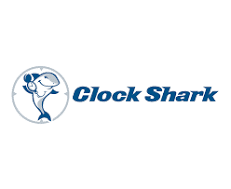 |
Plans range from $16 plus $7 per user to $30 plus $9 per user | ✓ — phone, chat, and email | ✗ — but a choice of 7 integrations | Custom clock out questions
Notifications and reminders |
1. Homebase
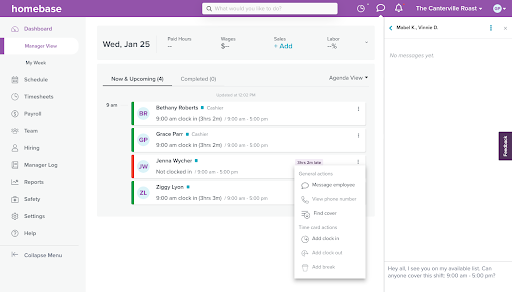
Source: https://joinhomebase.com/
Caption: Homebase has a versatile range of tools to make time tracking easy, quick, and more accurate than ever
Top features
Unlike many of its competitors, Homebase has an extremely robust free plan. It includes essential scheduling, time tracking, and communication tools. That means you can create a schedule, send it to your staff, and track their hours without paying a cent.
The communication tool also integrates with the scheduling and time tracking software. So, you can send reminders about shifts, contact your team quickly about no-shows, and arrange covers straight from the platform.
But the main draw of Homebase’s time clock is the array of features that help you manage your staff. The GPS time clock verifies each employee’s location so there’s no risk of buddy punching. You can also set labor cost controls to prevent early clock-in and automatically clock staff out. Then you can avoid costly compliance issues with overtime and missed break alerts for the whole team.
Pros and cons
One pro that differentiates Homebase from the competition is its payroll management options. Homebase is one of the few time tracking apps with built-in accounting tools so you can move seamlessly from generating timesheets to paying your staff. But we also offer a range of payroll integrations so you can pick from popular tools like Gusto or ADP as well.
Another way Homebase stands out is pricing. Homebase offers essential time tracking tools on the free account and most upgrades on the starter plans. As we also only charge by location, it’s easier to keep your costs low if your staff levels fluctuate.
One drawback is Homebase doesn’t have a location tracking system. Although you can verify where your employees are when they check in, you can’t track them as they move. This means you can’t monitor traveling teams as easily as you can with some other time clocks.
Pricing
As well as its free account, Homebase has three monthly paid plans:
- Essentials: $24.95 per month per location. Everything included in the Basic plan, plus advanced scheduling and time tracking, team communication, remote team, and payroll integration tools.
- Plus: $59.95 per month per location. Everything in Essentials, plus hiring, retention and performance tracking, time-off management, departments and permissions tools.
- All-in-one: $99.95 per month per location. Everything in Plus, as well as new hire onboarding, HR & compliance, labor cost management, and business insights tools.
Homebase payroll is on a separate account that’s $39 per month plus $6 per employee.
2. Sling
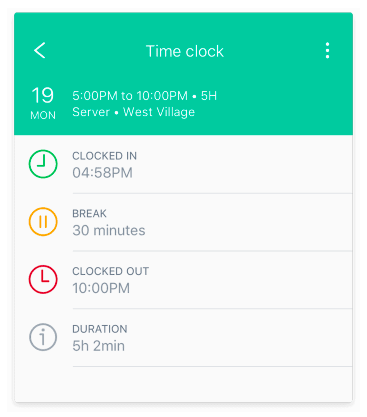
Source: https://getsling.com/employee-time-clock/
Caption: Sling is a user-friendly time tracking system that lets you monitor businesses in different timezones
Top features
Tracking hours across locations in different time zones can be challenging because there’s a higher chance of getting confused. If this happens, you might record the wrong hours and pay your staff incorrectly. Sling sidesteps this issue by letting you monitor each site in its local time which makes it a good option for international businesses.
Pros and cons
The main advantage of Sling is its ease of use. Customers have praised the software for its intuitiveness and simplicity.
However, Sling is less versatile than some other apps on this list as it only has scheduling and time tracking features. If you later need payroll, hiring, or HR tools, you’ll have to download more apps and juggle the different software.
Pricing
Although Sling has a free plan, this only includes scheduling and communication features — not time tracking. They also have a 14-day free trial.
Sling has two paid plans:
- Premium at $2 per user per month which includes time tracking, clock-in controls, and geofencing.
- Business at $4 per user per month to add on leave management and reporting features.
3. Connecteam

Source: https://connecteam.com/employee-time-clock-app/
Caption: Connecteam includes a GPS tracker tool to help you accurately record traveling workers
Top features
When you have traveling workers like delivery crews or moving teams, it can be hard to prevent time theft. Employees could be taking unnecessarily long routes or making too many pit stops without you knowing. Connecteam’s GPS location tracker eliminates this issue by verifying the location of remote workers on the go.
Pros and cons
Like Homebase, Connecteam has a robust free plan for up to ten users. This makes it a good option for very small teams with modest needs.
But once you exceed ten employees, Connecteam requires users to make a lot of upgrades to access all its time tracking tools. For example, the GPS location tracking tool is only available on the highest-cost plan. Other apps on this list include more features in their lowest-cost plans and could be more budget-friendly for small businesses like yours.
Pricing
As mentioned above, Connecteam has a free plan for up to ten users with basic time tracking tools and a 14-day free trial for unlimited features. The paid plans are as follows:
- Basic for $29 which has timesheets, notifications, and GPS clock-in verification.
- Advanced for $49 to get access to automatic clock outs and geofencing.
- Expert for $99 to add the GPS location tracker and reporting tools.
- Enterprise with a custom price for all these features and unlimited time clocks and reports.
4. When I Work

Source: https://wheniwork.com/
Caption: When I Work combines its time tracking tools with a handy team messenger
Top features
When I Work shares Homebase’s built-in messenger tool. That means you can oversee hours and chat with employees about late arrivals or no arrivals in the same place. If you’re busy arranging cover or confused over hours, this can simplify matters and reduce some stress.
Pros and cons
One pro of When I Work is their generous admin limit. If you need to delegate time tracking tasks to other managers, you can add up to three to each account.
But one con is the lack of phone support. Most small businesses need help with set-up and technical issues and these may be more challenging if you have to rely on chat and email. That’s especially true for small teams that can’t dedicate much time to fixing IT problems.
Pricing
When I Work has two paid plans at $4 and $8 per user per month. But the only difference for the time clock feature is that the higher cost plan has custom attendance reports.
5. Deputy
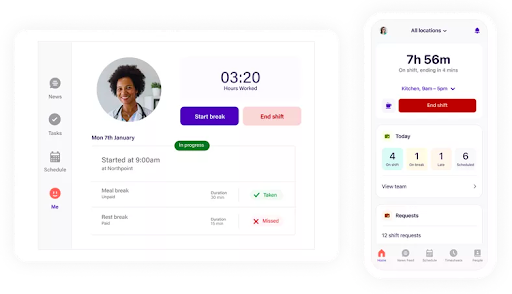
Source: https://www.deputy.com/features/employee-time-clock
Caption: Deputy’s task management tools let you check productivity as well as attendance
Top features
In some industries, you may lose money due to low productivity as well as time theft. For instance, your cleaning or construction crew may take longer than necessary to finish a job. Deputy’s task management feature lets you track attendance and output with its combined task management and time clock tools. All you have to do is assign a checklist to each employee and you receive a notification once they’ve finished.
Pros and cons
Although Deputy mostly focuses on scheduling and time tracking, it boasts a wide range of integrations. So, users are more likely to find the payroll integration that suits their needs from the selection.
One problem is that Deputy isn’t user-friendly. Customers say there’s a steep learning curve and complex features which isn’t ideal for busy managers with no spare time to learn new tech.
Pricing
Deputy charges $3.50 per user per month for the plan with its time tracking features but you can test them for free in its 31-day trial. You have to pay extra for scheduling tools.
6. Fourth (formerly HotSchedules)
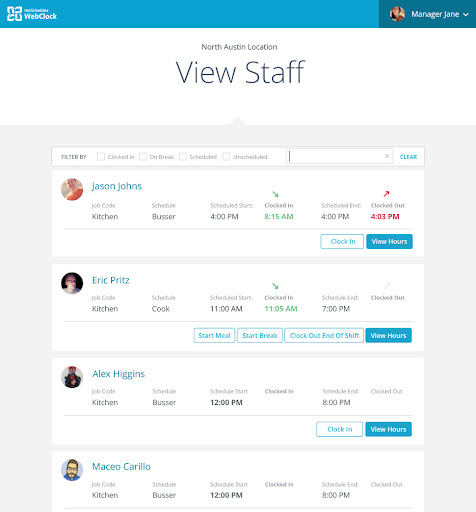
Source: https://www.g2.com/products/hotschedules/reviews
Caption: Fourth lets you keep detailed track of staff to prevent labor budget and compliance issues
Top features
Keeping track of hours and rates for tipped staff can be challenging. But if you don’t stay on top of it, you may end up accidentally paying staff below minimum wage and incurring fines. Fourth’s compliance tools help you monitor tips and stay compliant.
Pros and cons
Fourth is one of the few platforms on our list with built-in payroll. That means you can move seamlessly between time tracking and paying your staff instead of changing apps.
The downside is Fourth only integrates with its own payroll tool. If you’re happy with your current accounting software, this means unnecessarily overhauling your system.
Pricing
Fourth’s prices are not readily available.
7. Quickbooks Time (formerly TSheets)
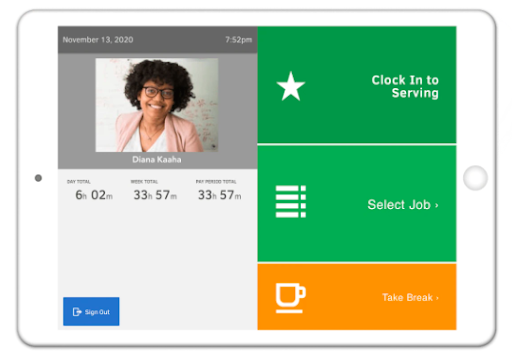
Source: https://quickbooks.intuit.com/time-tracking/kiosk/
Caption: Quickbooks Time’s tracking and management tools make it easy to track offsite progress
Top features
Similar to Connecteam, Quickbooks has a mobile workforce tracking system. Users can receive updates about their teams’ locations throughout the day alongside photos and task updates. That makes it ideal for managers who want a clear picture of their remote workers’ progress.
Pros and cons
The combination of Quickbooks’ tracking and task management tools makes it a good pick for traveling construction and repair crews. Managers get a clear picture of how each job is progressing and how many hours their teams are working even if they move between several sites in a day.
But the pricing may deter some users. Quickbooks charge per location and employee which makes it less cost-effective than other time tracking apps.
Pricing
Quickbooks Time has two paid plans:
- Time premium at $20 per month and $8 per employee for basic scheduling, time tracking, and the ‘who’s working’ tool.
- Time elite at $40 per month and $10 per employee for geofencing and project management tools.
There’s also the option for a 30-day trial to test all the features.
8. Time Doctor
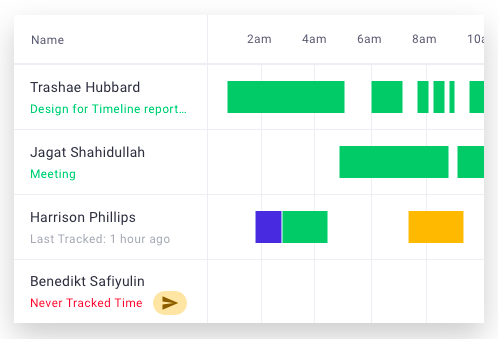
Source:https://www.timedoctor.com/employee-time-tracking
Caption: Time Doctor lets you screen capture your employees’ work as well as track their hours
Top features
When employees use a computer for work, it’s easy to develop a bad habit of checking social media or other time-wasting websites. Time Doctor helps your team stay productive and reduces time theft by monitoring website usage and taking sporadic screenshots. But the app doesn’t track anything during breaks or outside of company time to protect your team’s privacy.
Pros and cons
The upside of Time Doctor is the range of integrations. There are over 70 apps for everything from task management to accounting and communication.
But the downside is Time Doctor focuses on office-based work so it may not be suitable for businesses with employees on their feet. For example, if you run a shop, restaurant, or salon, you may find you’re paying for a lot of unnecessary tools or using a system that’s too complex for your needs.
Pricing
There are three monthly paid plans:
- Basic at $7 per user for simple time tracking and task management tools.
- Standard at $10 per user to add payroll and integrations.
- Premium at $20 per user for client log-ins and video screen captures.
Time Doctor also offers a free trial for 14 days.
9. Clockify
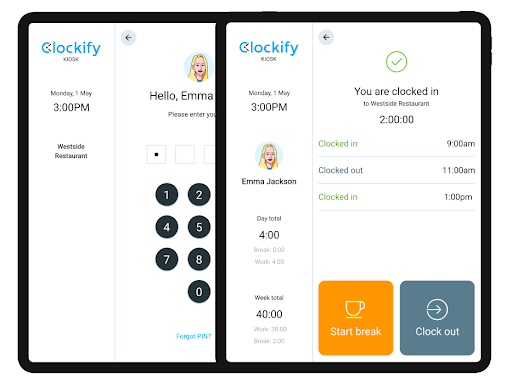
Source: https://clockify.me/feature-list#features-time-tracker
Caption: Clockify’s time tracking helps you calculate how much to pay staff and how much to bill clients
Top features
When you provide a service, you don’t want to bill the client for admin tasks and staff meetings. Clockify lets you differentiate between billable and nonbillable hours easily so you know exactly how much to charge clients. That makes Clockify a great option for graphic design and marketing teams.
Pros and cons
Like Homebase, Clockify has a versatile free plan which includes time tracking, timesheets, and a mobile app for employees.
But like Time Doctor, Clockify targets office-based work and isn’t the best option for restaurants, shops, and similar businesses. That’s because if you need to grow as your business needs change, you’ll probably end up paying for unnecessary add-ons.
Pricing
Aside from its free account, Clockify has four monthly paid plans:
- Basic at $4.99 per user to access tools like break management and pins for kiosks.
- Standard at $6.99 per user for leave management and reminders.
- Pro at $9.99 per user to add screenshots, analytics, and geofencing.
- Enterprise at $14.99 per user which is for larger businesses and includes a custom subdomain.
10. ClockShark
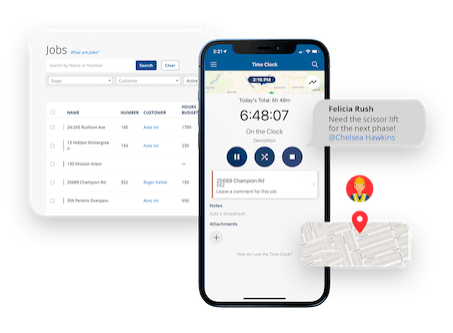
Source: https://www.clockshark.com/tour/employee-time-tracking-app
Caption: ClockShark lets you write questions for staff to answer when they clock out from their shifts
Top features
One interesting feature of ClockShark is its custom clock-out questions. Admins can write questions for employees to answer at the end of each shift and receive a notification when there’s an unexpected answer. For instance, you could ask how many staff are on shift to check for no-shows or check essential stock levels to make sure you’re not running low.
Pros and cons
ClockShark users report the software is intuitive and easy to navigate. That’s essential for busy managers who don’t have time to learn and manage new software.
But compared to other software, ClockShark has a high starting price. It also charges per employee on top of the base rate which means the more employees you hire, the greater your costs.
Pricing
Clock Shark has two paid monthly plans:
- Standard at $16 plus $7 per employee for time tracking and GPS tools.
- Pro at $30 plus $9 per employee to add departmental management and clock-out questions.
You can also test their features with a 14-day free trial.
How to buy time clock software
Now you have more information about the best time clocks on the market, you need to know how to select the right one and how to implement it. Here’s our step-by-step guide:
- Identify your business needs: Consider your industry and the typical challenges you face. Do you have shop workers who forget to clock in? Or remote crews who don’t accurately record their mileage? This will help you decide which features are essential, which are desirable, and which are unnecessary.
- Research and test: Watch videos, take advantage of free trials, and even test run time clocks for a week. Then you’ll have a better idea of how each software will fit into your business.
- Get feedback and evaluate: Ask your staff for their opinions. For instance, they may dislike the sound of a biometric time clock that records their body measurements. Their view will help you make a more informed decision about which app to get.
- Train your team: Conduct workshops and give employees access to tutorials. Then you’ll have fewer teething pains in the initial weeks as everyone gets used to the app. For example, employees will be more likely to remember to leave before the time clock automatically clocks them out.
- Continuously reflect and update: As your business is likely to change, your time clock should too. Keep collecting feedback, checking what new features the app has to offer, and re-evaluating your needs. If you outgrow the current version of your app, consider an upgrade.
Common pitfalls to avoid when buying time clock software
While you’re choosing your new time clock, a lot can go wrong. Here are some common problems for you to be aware of:
- No integrations with your current system: No doubt your business already uses software like payroll or POS. Unless you want to revamp your system, make sure your new time clock works seamlessly with these apps.
- Insufficient customer support: As a small business manager, you may not have the tech know-how or the time to learn new software. That’s when your time clock’s customer support team should step in and help you with set-up and any technical issues.
- Unaffordable costs: Price plans should suit your business. If you’ve got a very small team, consider a fee per employee. And if you’re growing, pricing per location can prevent your costs from spiraling as you hire more people.
- Lack of scalability: Time clocks need to grow alongside your business so they should have upgrades to let you add features as you need them.
Why Homebase is the best time clock for small businesses
Time clocks can protect your profit margins by recording hours more accurately. That’s why it’s important to find software that lets you pay for exactly what you need so you don’t end up overspending.
If you’re in certain industries, that might be Quickbooks Time or Clockify. Traveling workers like repairmen and delivery crews may benefit from Quickbooks’ GPS location tracking system. Whereas Clockify helps managers at office locations keep check of their employees’ productivity levels.
But when you’re looking for robust, all-around software that covers all your needs, the best time clock for small businesses is Homebase. The free account with flexibly priced upgrades makes it an affordable option for very small and growing teams.
There’s also a range of versatile time tracking tools to assist you with tasks from creating virtual fences for off-site work to reminding employees to clock in. With their help, you can track time easily and accurately without adding tasks to your workload or paying out of pocket.




